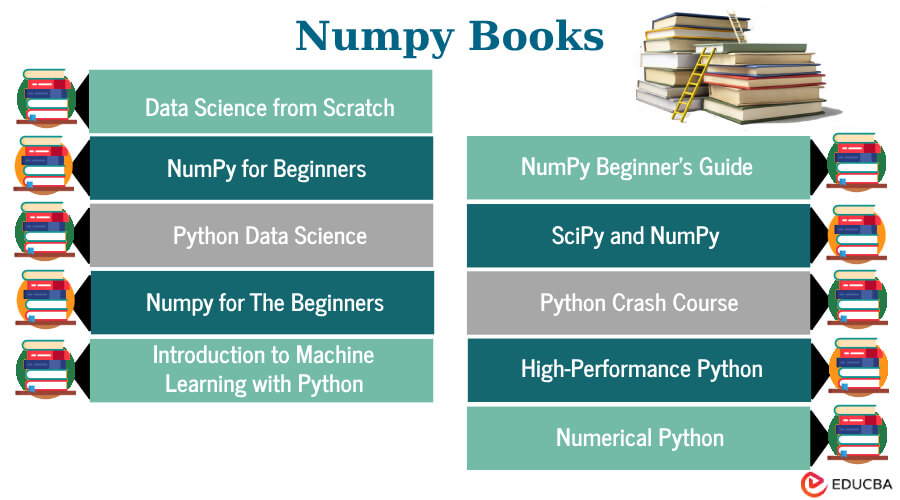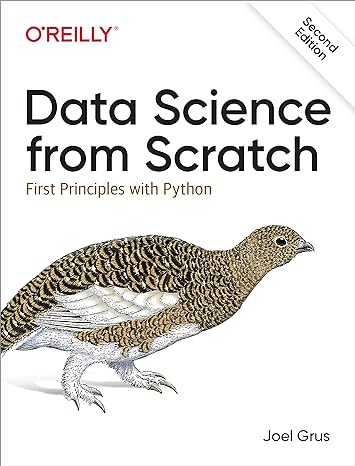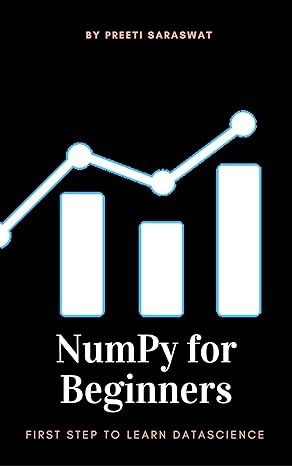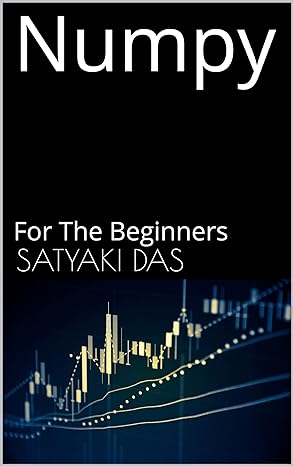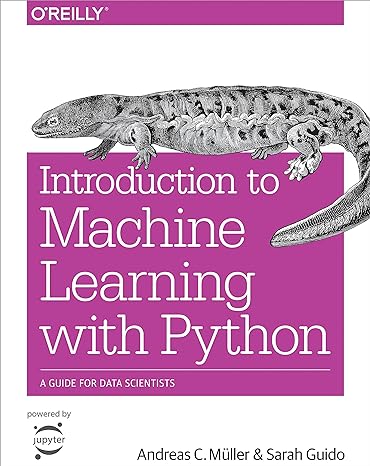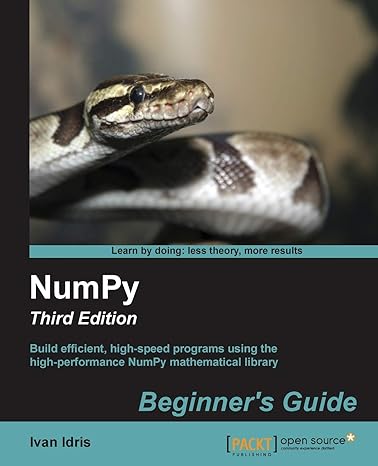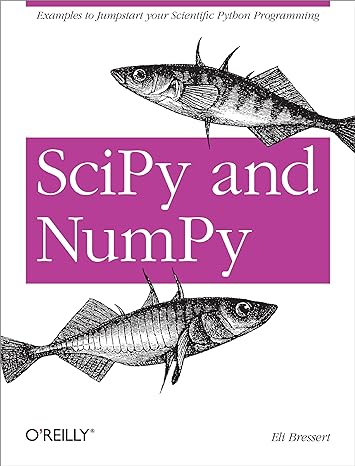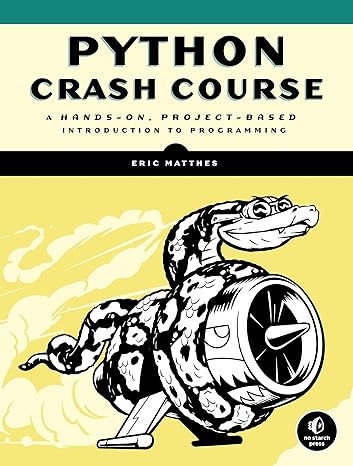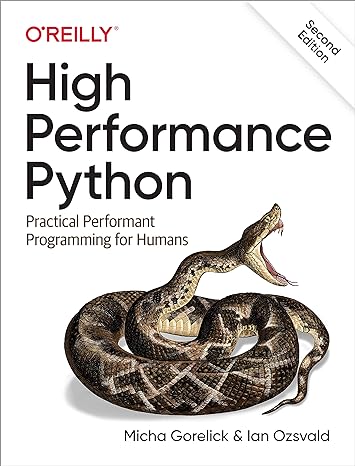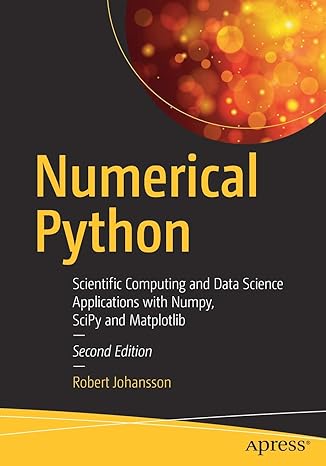Updated December 18, 2023
Introduction to Numpy Books
Numpy is a powerful Python library that aims to increase efficiency and optimize workflow by being 50 times faster than traditional Python lists. Its features can be summed up as those concerning scientific computation and mathematical operations, including Fourier transforms, linear algebra, statistical operations, etc. Tensorflow and Scikit make use of this library to carry out matrix multiplication.
Key Features
- The books mentioned here effectively make you settle in the nuances of differing Python libraries, mainly NumPy, to better you in everything related to NumPy.
- Learn to combine these libraries in the vastness of data science, which heavily emphasizes mathematical concepts of statistics, probability, and algebra.
- Portray your models in machine learning like a skilled data scientist by studying them in great detail and assimilating them to pluck out the best model for your situation.
Best Books to Learn Numpy
Whether you’re a data science professional, a Python enthusiast, or a student, these ten books on Numpy offer comprehensive insights into various aspects such as machine learning, numerical Python, Python crash course, and more, providing a profound understanding of these subjects.
| # | Books | Author | Published | Rating |
| 1. | Data Science from Scratch | Joel Grus | 2019 | Amazon: 4.4 Goodreads: 3.9 |
| 2. | NumPy for Beginners: First step to learn Data Science | Preeti Saraswat | 2017 | Amazon:4.4
Goodreads: 3.8 |
| 3. | Python Data Science Handbook | Jake VanderPlas | 2023 | Amazon: 4.1
Goodreads:4.3 |
| 4. | Numpy: For The Beginners | Satyaki Das | 2020 | Amazon:4.8
Goodreads: 3.5 |
| 5. | Introduction to Machine Learning with Python | Andreas Muller | 2016 | Amazon:4.4
Goodreads: 4.3 |
| 6. | NumPy Beginner’s Guide | Ivan Idris | 2015 | Amazon: 4.1
Goodreads: 3.9 |
| 7. | SciPy and NumPy | Eli Bressert |
2013 |
Amazon 3
Goodreads- 3.1 |
| 8. | Python Crash Course | Eric Matthes | 2023 | Amazon 4.5
Goodreads -4.3 |
| 9. | High-Performance Python | Micha Gorelick , Ian Ozsvald | 2020 | Amazon 4.7 Goodreads- 4.1 |
| 10. | Numerical Python: Scientific Computing and Data Science Applications with Numpy | Robert Johansson | 2018 | Amazon: 4.5 Goodreads: 4.1 |
Review the key points provided to gain insights into each Numpy book, helping you determine which ones suit your needs.
Book#1. Data Science from Scratch
Author: Joel Grus
Book Review
A solid book for scaling the use of libraries like numpy and sci-kit to collect invaluable examples and statistics. The things you will learn here will be paramount for your extended path to data science, which this book covers precisely like a pro.
Key Takeaways from Book
- Get to the bottom of what Python is based on -algebra, statistics, and probability to clear your concepts.
- Figure out the models that make machine learning possible with K-nearest neighbors, logistic regression, and decision trees.
Get this Book link.
Book#2. NumPy for Beginners: First step to learn Data Science
Author: Preeti Saraswat
Book Review
This book serves its purpose as a remarkable reference guide that drills the facts of Python’s most sought-after library, “Numpy,” into our heads. Deep dive into a sea of technicalities and statistics to emerge as an invincible data scientist.
Key Takeaways from Book
- Learn array shapes axes and broadcasting, masking, filtering, and aggregating with an easy-to-follow approach.
- Be skilled with data types to tackle any obstacle in data science.
Get this Book link
Book#3. Python Data Science Handbook
Author: Jake VanderPlas
Book Review
Have a broad expanse of knowledge covering but not limited to IPython, Matplotlib, pandas, sci-kit-learn, and NumPy. The content is formulated in a good architecture that leaves no room for confusion but more for creativity.
Key Takeaways from Book
- It overviews Ipython and jupyter for computational environments, sci-kit Learn for curating machine learning models, and pandas for data manipulation.
- It covers the strong aspects of numpy to build upon the fundamentals of using ndarray for efficient storage and matplotlib for visualizations.
Get this Book link.
Book#4. Numpy: For The Beginners
Author: Satyaki Das
Book Review
The toolkit of Python, which is considered the most powerful, couldn’t be displayed more straightforwardly than what we have here in this book. Get the most out of it by mind mapping your learnings of n-dimensional arrays, building numpy arrays, and performing valuable calculations.
Key Takeaways from Book
- Clear your misunderstandings of the minute complexities of mathematical operations in a step-by-step approach.
- Become a beginner in data science by learning through doing multidimensional operations along the way.
Get this Book link
Book#5. Introduction to Machine Learning with Python
Author: Andreas Muller
Book Review
Carve your way through this extensive guide, which demonstrates how to deliver results from practice and keeps you on your toes with findings about the machine learning domain. Be efficient with model evaluation and parameter tuning, etc.
Key Takeaways from Book
- Unlimit your machine learning capabilities with fundamentals of machine learning, advantages and shortcomings of specific popular models, and more.
- Covers the framework of pipelines for models, workflow encapsulation, and briefings on text-specific techniques.
Get this Book link
Book#6. NumPy Beginner’s Guide
Author: Ivan Idris
Book Review
Having a prerequisite knowledge of Python isn’t enough. You need the real deal to get you started; this book proves to be just that. Go at the palette of scientific computing, array objects, functions, and matrices with some of the best briefs.
Key Takeaways from Book
- Has immense information on the history of NumPy, the Python help system, and basic arithmetic and variable assignments.
- Bring the best out of the print() function, modules, arange() function, one-dimensional slicing and indexing, and comma-separated value files.
Get this Book link.
Book#7. SciPy and NumPy
Author: Eli Bressert
Book Review
Bringing to you the best of both worlds, this book goes on a joyous ride to get the numerical processing of NumPy and the clustering of SciPy together. Go on an enchanting walk through the pages to rediscover your lost passion for Python’s libraries.
Key Takeaways from Book
- Browse through NumPy arrays, elementary mathematical operations, and interpolation functions for SciPy.
- Perform distributions and functions of SciPy and bring together the statistical tools of distribution and functions to build efficiency.
Get this Book link.
Book#8. Python Crash Course
Author: Eric Matthes
Book Review
Everything you’ll ever require is present in this book regarding Python, whether installing pip or creating your virtual environment. This book will cover it all. Practice your code with real-world examples to build accuracy.
Key Takeaways from Book
- Make user-friendly apps, optimize their data, and run them on the production-ready interface to know what they look like online.
- Practice with the most potent libraries of pytest, Pygame, Matplotlib, etc., to leverage them against effective 2D games.
Get this Book link.
Book#9. High-Performance Python
Author: Micha Gorelick, Ian Ozsvald
Book Review
Considered amongst many as the diamond in the rough, it provides many in-depth methods for writing async code, conserving RAM and parallel programming, and more. Check out profiling and benchmarking, which are its notable features.
Key Takeaways from Book
- Grasp the insights behind Python abstracts beneath computer architecture and be mindful of NumPy Python, profilers, etc.
- Leverage profiling to decongest CPU time and memory usage, handle multiple I/O, and convert multiprocessing code to run on remote clusters.
Get this Book link.
Book#10. Numerical Python: Scientific Computing and Data Science Applications with Numpy
Author: Robert Johansson
Book Review
A book meant to solve your dealings with various libraries of Python that at first seem daunting and challenging. Don’t sweat when you could be flipping through the starters for mathematical scripts such as fenics, sympy, and fipy, among many more.
Key Takeaways from the book
- Be thorough with your visualization and numerical file I/O, symbolic computing, vectors, matrices, and more.
- Master Python code with features ranging from interpolation and integration, stats models, and sci-kit learning.
Get this Book link
Recommended Books
We hope that this EDUCBA information on “Numpy Books” benefited you. You can view EDUCBA’s recommended articles for more information.
